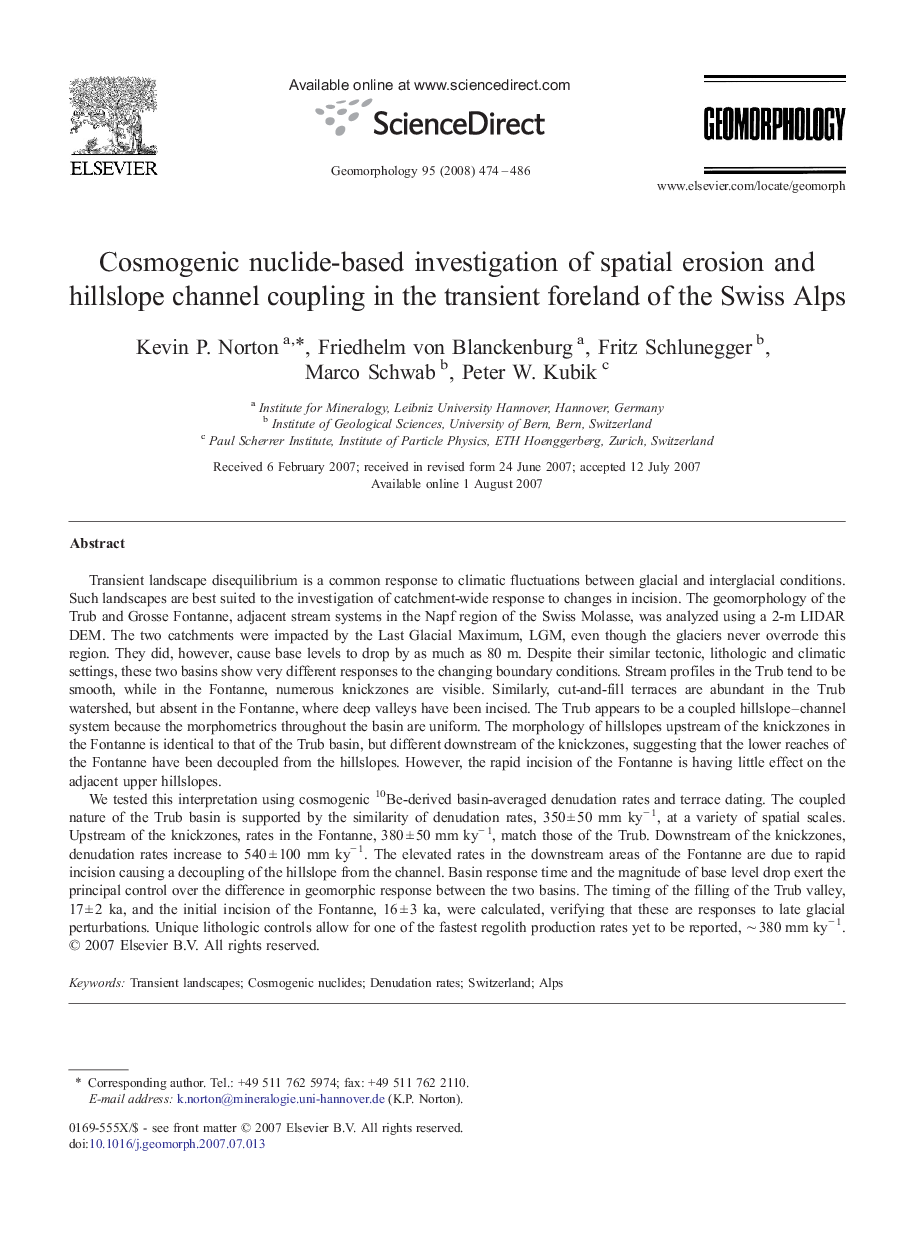| کد مقاله | کد نشریه | سال انتشار | مقاله انگلیسی | نسخه تمام متن |
|---|---|---|---|---|
| 4686878 | 1635562 | 2008 | 13 صفحه PDF | دانلود رایگان |

Transient landscape disequilibrium is a common response to climatic fluctuations between glacial and interglacial conditions. Such landscapes are best suited to the investigation of catchment-wide response to changes in incision. The geomorphology of the Trub and Grosse Fontanne, adjacent stream systems in the Napf region of the Swiss Molasse, was analyzed using a 2-m LIDAR DEM. The two catchments were impacted by the Last Glacial Maximum, LGM, even though the glaciers never overrode this region. They did, however, cause base levels to drop by as much as 80 m. Despite their similar tectonic, lithologic and climatic settings, these two basins show very different responses to the changing boundary conditions. Stream profiles in the Trub tend to be smooth, while in the Fontanne, numerous knickzones are visible. Similarly, cut-and-fill terraces are abundant in the Trub watershed, but absent in the Fontanne, where deep valleys have been incised. The Trub appears to be a coupled hillslope–channel system because the morphometrics throughout the basin are uniform. The morphology of hillslopes upstream of the knickzones in the Fontanne is identical to that of the Trub basin, but different downstream of the knickzones, suggesting that the lower reaches of the Fontanne have been decoupled from the hillslopes. However, the rapid incision of the Fontanne is having little effect on the adjacent upper hillslopes.We tested this interpretation using cosmogenic 10Be-derived basin-averaged denudation rates and terrace dating. The coupled nature of the Trub basin is supported by the similarity of denudation rates, 350 ± 50 mm ky− 1, at a variety of spatial scales. Upstream of the knickzones, rates in the Fontanne, 380 ± 50 mm ky− 1, match those of the Trub. Downstream of the knickzones, denudation rates increase to 540 ± 100 mm ky− 1. The elevated rates in the downstream areas of the Fontanne are due to rapid incision causing a decoupling of the hillslope from the channel. Basin response time and the magnitude of base level drop exert the principal control over the difference in geomorphic response between the two basins. The timing of the filling of the Trub valley, 17 ± 2 ka, and the initial incision of the Fontanne, 16 ± 3 ka, were calculated, verifying that these are responses to late glacial perturbations. Unique lithologic controls allow for one of the fastest regolith production rates yet to be reported, ∼ 380 mm ky− 1.
Journal: Geomorphology - Volume 95, Issues 3–4, 15 March 2008, Pages 474–486